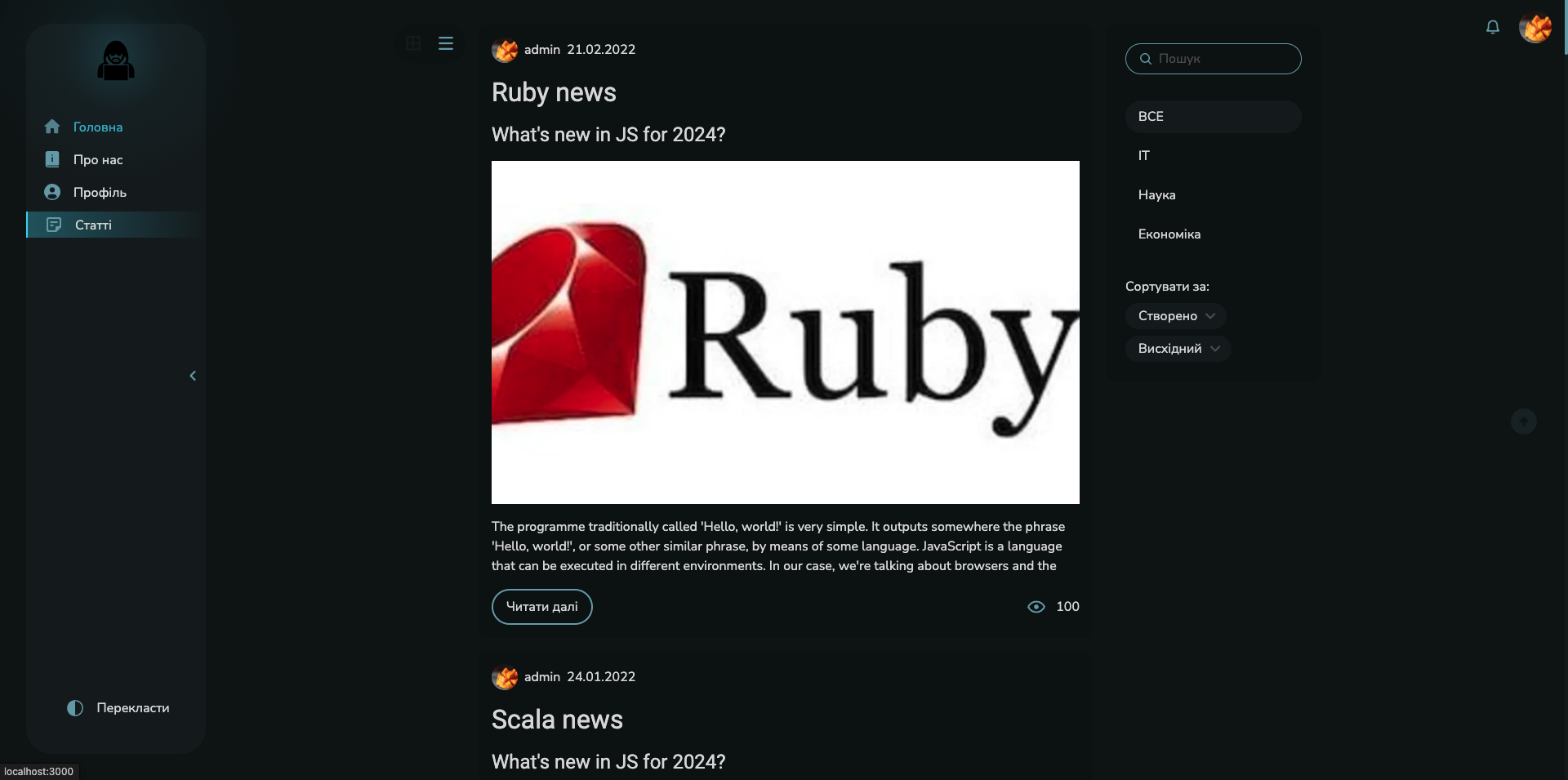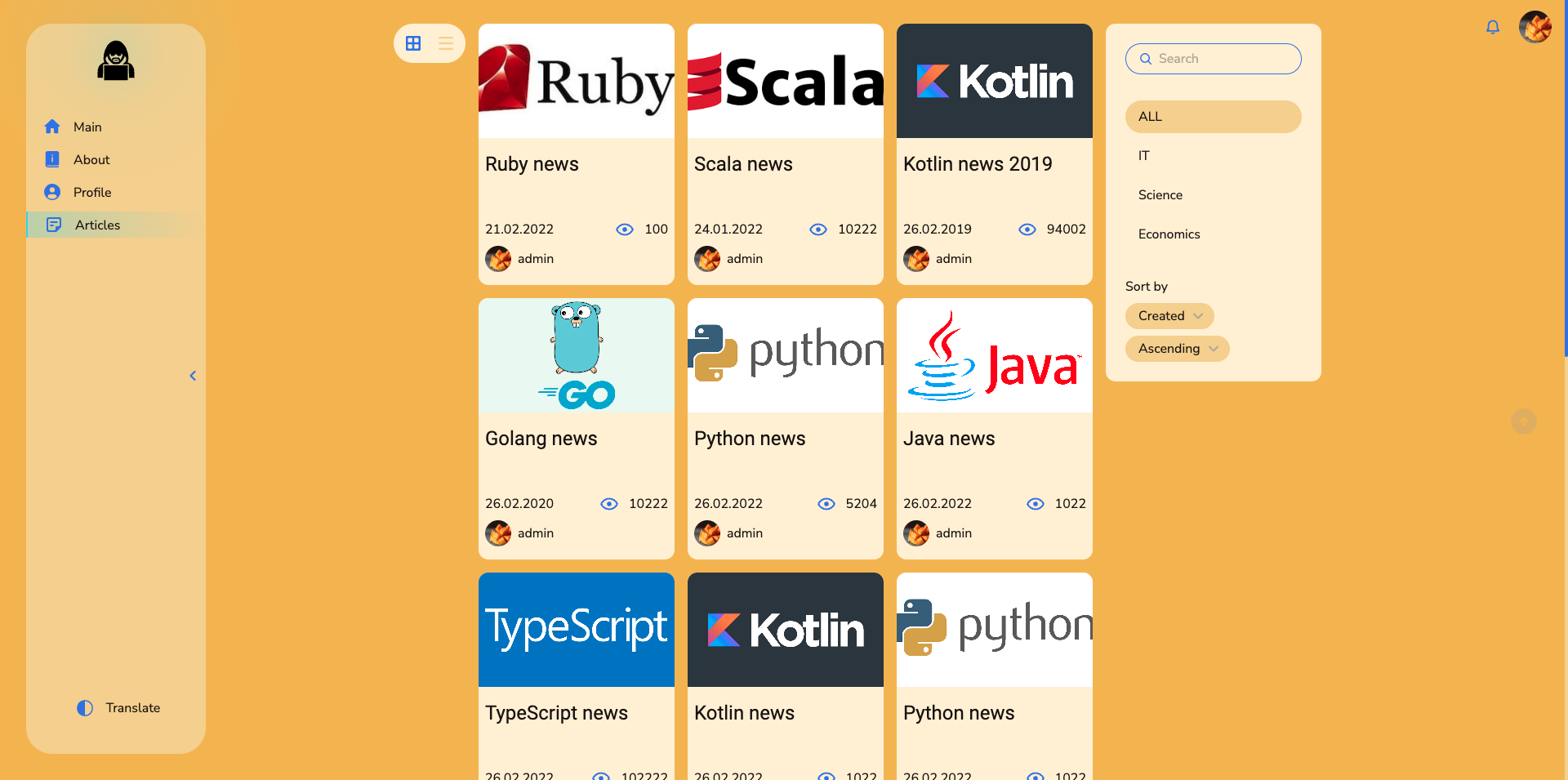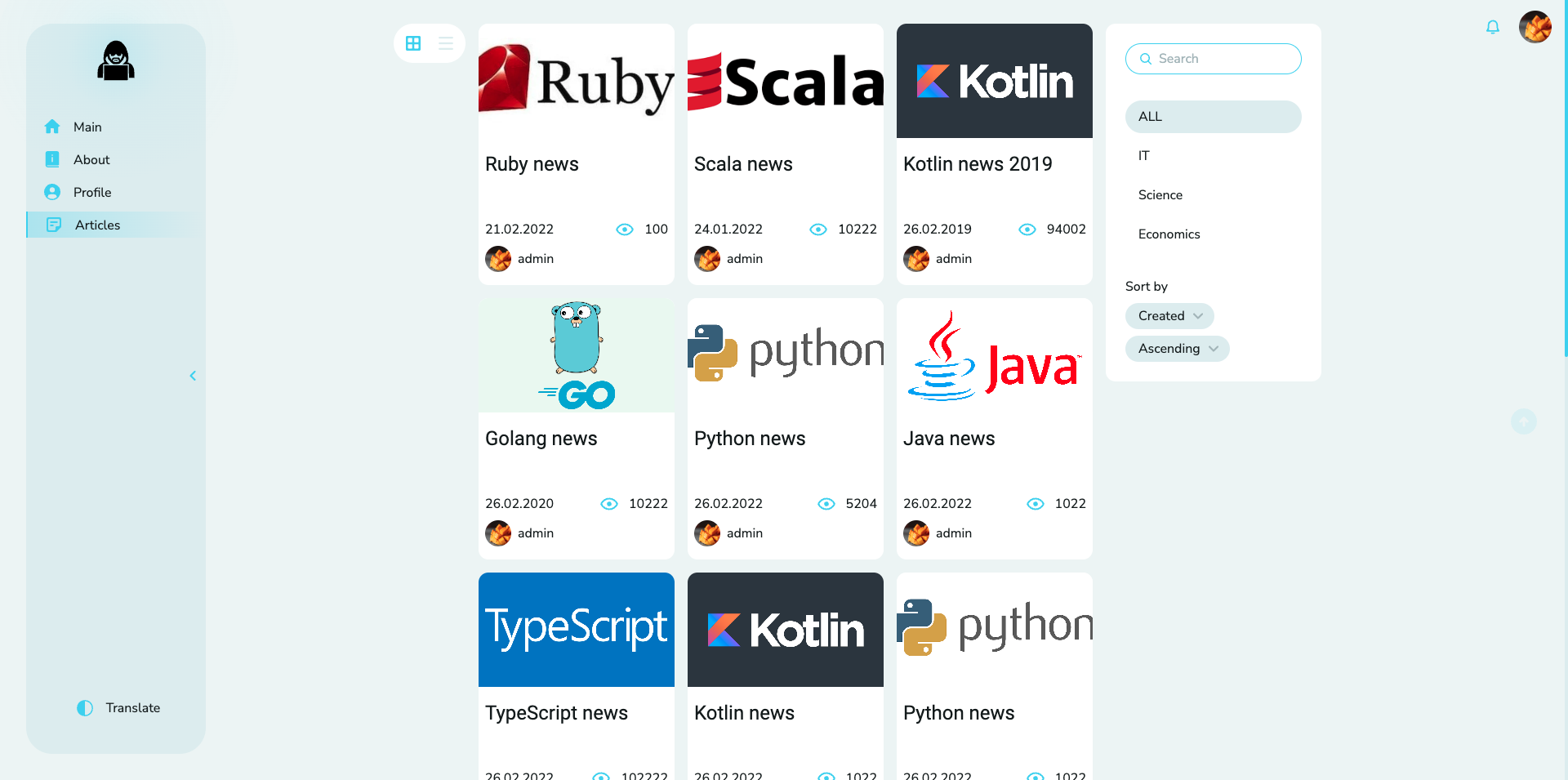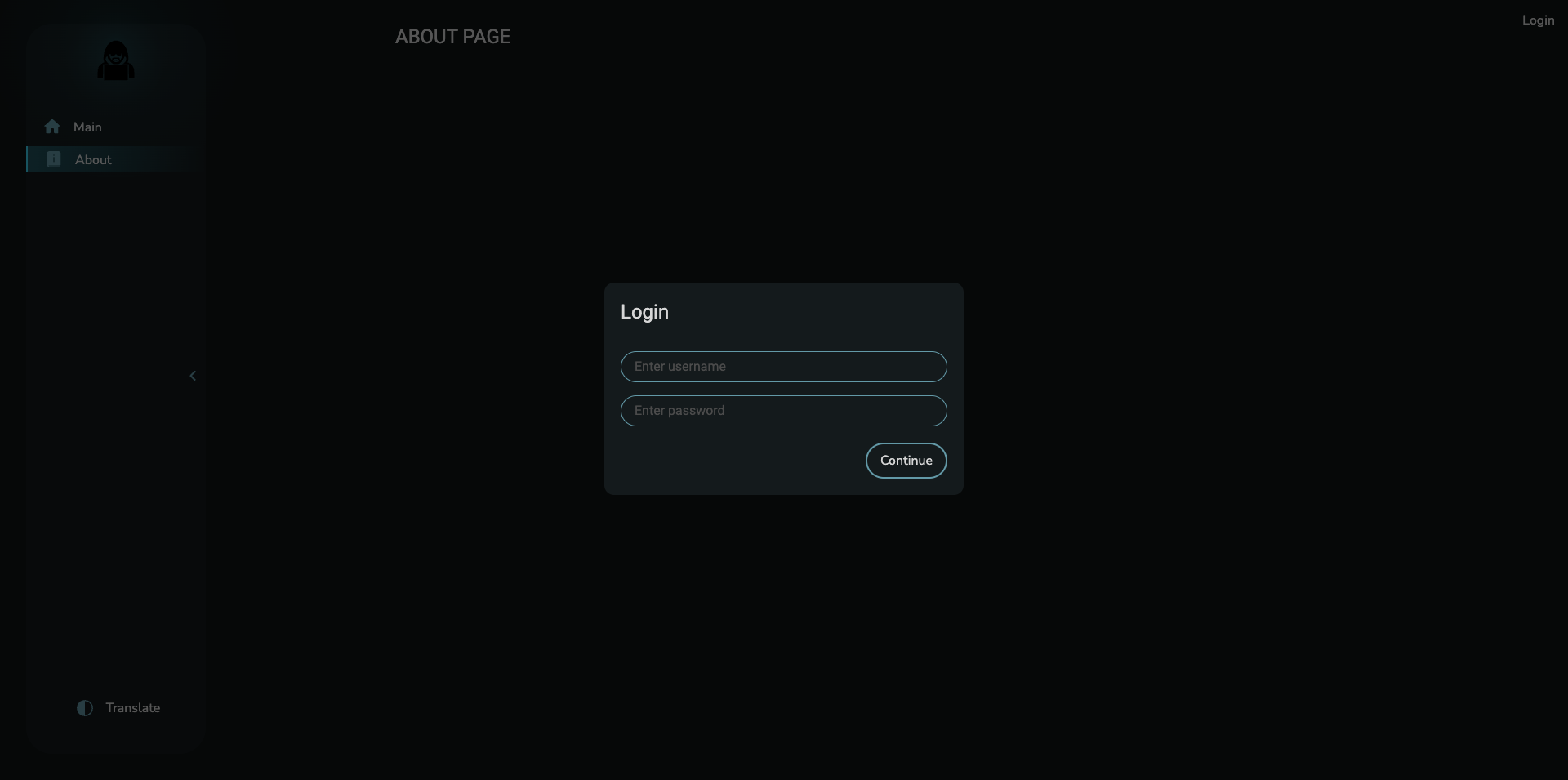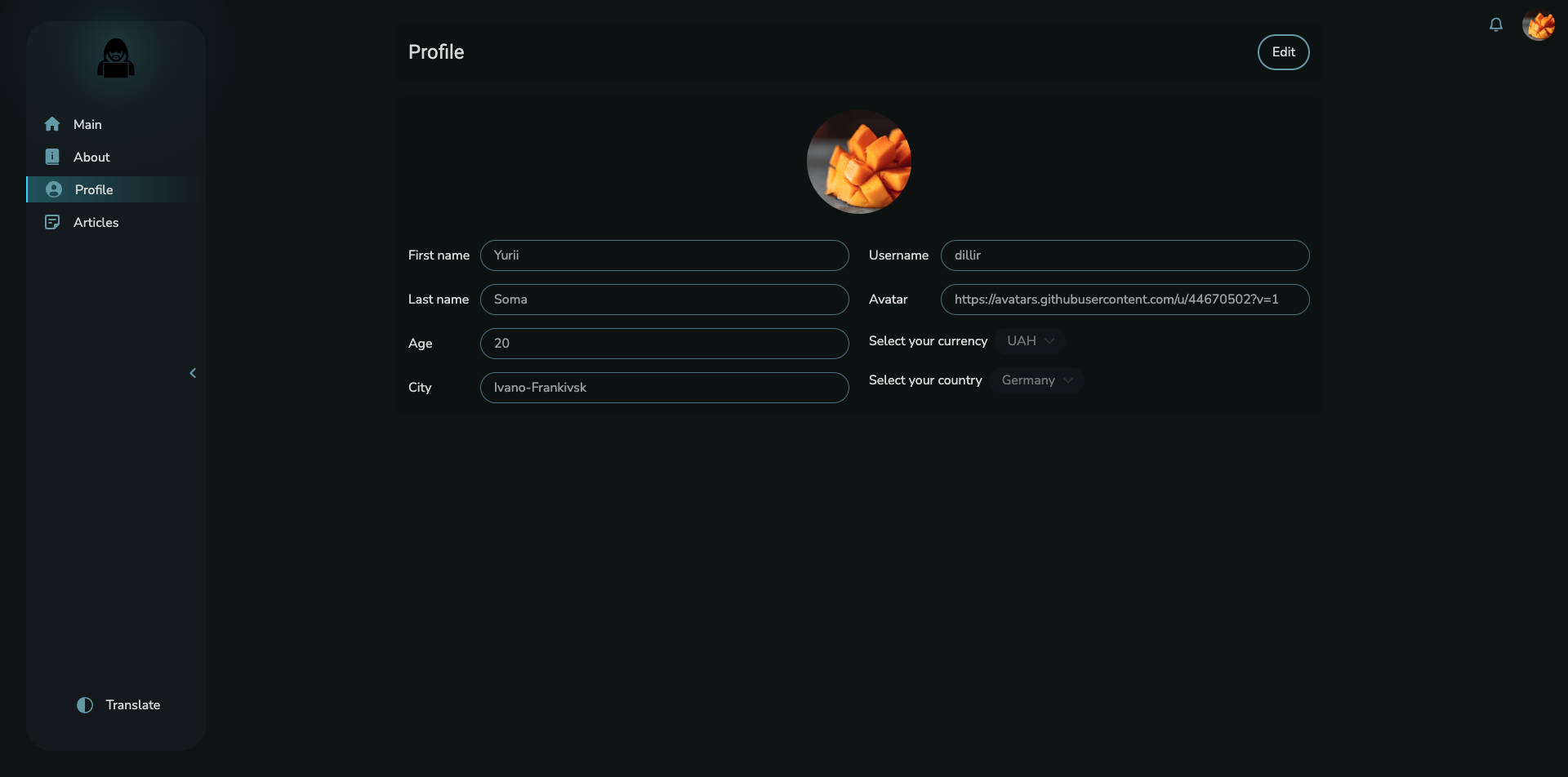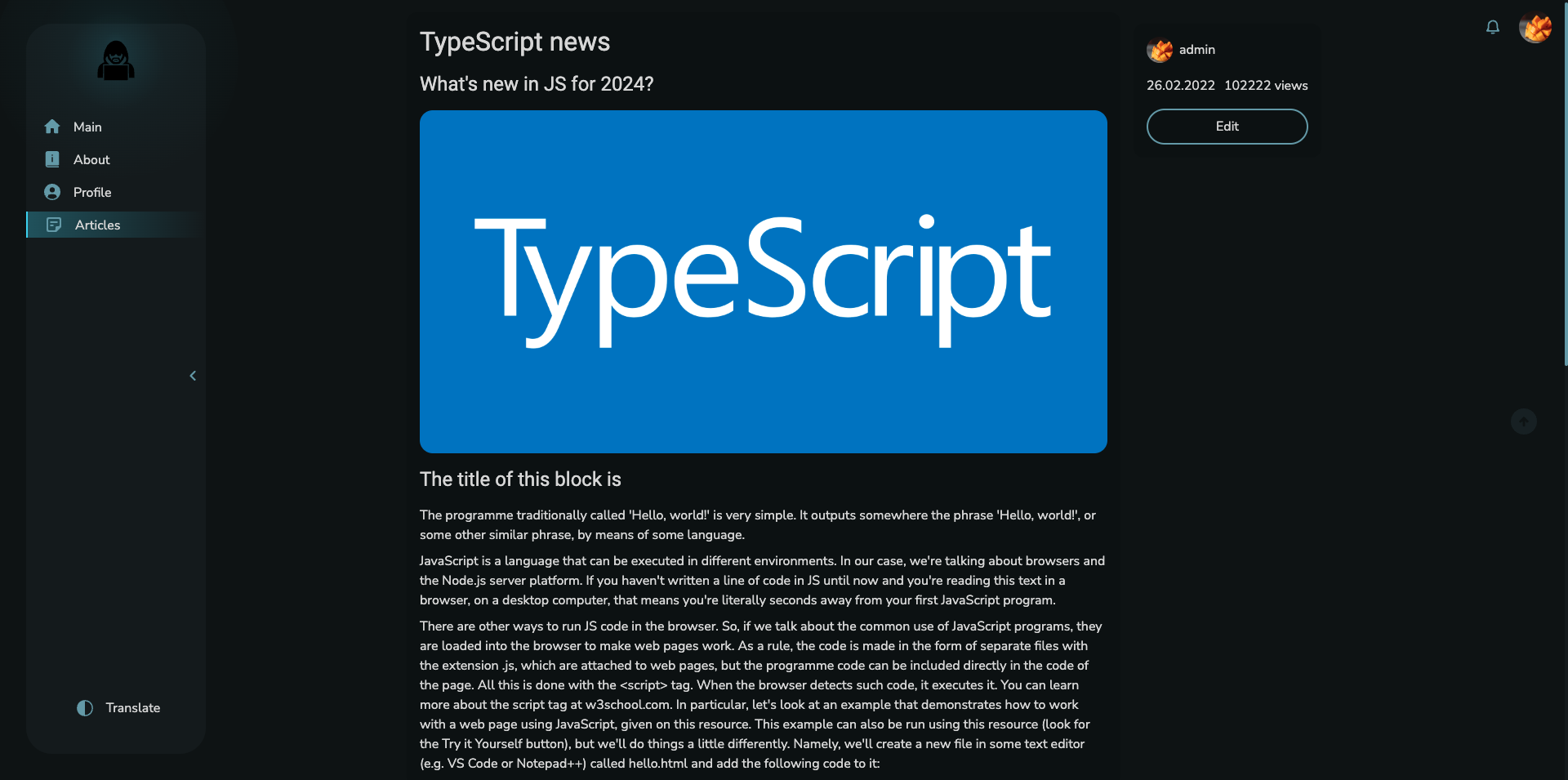This project is a robust, production-ready web application boilerplate. It is built with modern technologies like React, TypeScript, Webpack, and Storybook. It also includes a comprehensive testing setup with Jest and Loki, and it enforces code quality with ESLint and Stylelint.
Frontend - https://enchanting-frangipane-99052e.netlify.app/
Backend - https://social-network-backend-phi.vercel.app/
To get started with this project, clone the repository and install the dependencies:
git clone git@github.com:DILLIR/social-network.git
npm install
npm run start:dev or npm run start:dev:vite- React: A JavaScript library for building user interfaces.
- TypeScript: A typed superset of JavaScript that compiles to plain JavaScript.
- Webpack: A static module bundler for modern JavaScript applications.
- Storybook: An open-source tool for developing UI components in isolation.
- Jest: A delightful JavaScript Testing Framework with a focus on simplicity.
- Loki: A visual regression testing tool for Storybook.
- ESLint: A pluggable and configurable linter tool for identifying and reporting on patterns in JavaScript.
- Stylelint: A mighty, modern linter that helps you avoid errors and enforce conventions in your styles.
In the project directory, you can run:
npm run start- Starts the frontend project using webpack dev servernpm run start:vite- Starts the frontend project using Vitenpm run start:dev- Starts the frontend project with webpack dev server + backendnpm run start:dev:vite- Starts the frontend project with Vite + backendnpm run start:dev:server- Starts the backend servernpm run build:prod- Builds the project in production modenpm run build:dev- Builds the project in development mode (not minified)npm run lint:ts- Lints TypeScript filesnpm run lint:ts:fix- Fixes TypeScript files using the linternpm run lint:scss- Lints SCSS files using a style linternpm run lint:scss:fix- Fixes SCSS files using a style linternpm run test:unit- Runs unit tests with Jestnpm run test:ui- Runs screenshot tests with Lokinpm run test:ui:ok- Approves new screenshotsnpm run test:ui:ci- Runs screenshot tests in CInpm run test:ui:report- Generates a full report for screenshot testsnpm run test:ui:json- Generates a JSON report for screenshot testsnpm run test:ui:html- Generates an HTML report for screenshot testsnpm run storybook- Starts Storybooknpm run storybook:build- Builds the Storybook projectnpm run prepare- Prepares pre-commit hooksnpm run generate:slice- Script for generating FSD slices
The project is written in accordance with the Feature Sliced Design methodology.
Link to the documentation - feature sliced design
The project uses the i18next library for handling translations.
Translation files are stored in public/locales.
For a better experience, we recommend installing the i18next plugin for WebStorm/VSCode.
i18next Documentation - https://react.i18next.com/
The project uses 4 types of tests:
- Regular unit tests with Jest -
npm run test:unit - Component tests with React Testing Library -
npm run test:unit - Screenshot testing with Loki -
npm run test:ui - End-to-end (e2e) testing with Cypress -
npm run test:e2e
The project uses ESLint for checking TypeScript code and Stylelint for checking style files.
Additionally, for strict control over the main architectural principles, a custom ESLint plugin, eslint-plugin-fs-path-checker, is used. This plugin includes 3 rules:
path-checker- Prohibits using absolute imports within the same module.layer-imports- Ensures the correct use of layers according to the FSD methodology (e.g., widgets cannot be used in features and entities).public-api-import- Allows importing from other modules only through their public API. Includes auto-fix.
Running Linters
npm run lint:ts- Lint TypeScript filesnpm run lint:ts:fix- Fix TypeScript files using the linternpm run lint:scss- Lint SCSS files using a style linternpm run lint:scss:fix- Fix SCSS files using a style linter
In the project, story cases are written for each component.
Server requests are mocked using storybook-addon-mock.
The file with story cases is created next to the component with the .stories.tsx extension.
You can start Storybook with the command:
npm run storybook
Example of a story case file:
import React from 'react';
import { ComponentStory, ComponentMeta } from '@storybook/react';
import { ThemeDecorator } from '@/shared/config/storybook/ThemeDecorator/ThemeDecorator';
import { Button, ButtonSize, ButtonTheme } from './Button';
import { Theme } from '@/shared/const/theme';
export default {
title: 'shared/Button',
component: Button,
argTypes: {
backgroundColor: { control: 'color' }
}
} as ComponentMeta<typeof Button>;
const Template: ComponentStory<typeof Button> = (args) => <Button {...args} />;
export const Primary = Template.bind({});
Primary.args = {
children: 'Text'
};
export const Clear = Template.bind({});
Clear.args = {
children: 'Text',
theme: ButtonTheme.CLEAR
};For development, the project contains 2 configs:
- Webpack -
./config/build - Vite -
vite.config.ts
Both build tools are adapted to the main features of the application.
All configurations are stored in /config:
/config/babel- Babel configuration/config/build- Webpack configuration/config/jest- Test environment configuration/config/storybook- Storybook configuration
In the scripts folder, you will find various scripts for refactoring, simplifying code writing, generating reports, etc.
GitHub Actions configuration is located in /.github/workflows.
The CI runs all types of tests, project and Storybook builds, and linting.
In the pre-commit hooks, the project is checked with linters. Configuration is located in /.husky.
Data interaction is done using Redux Toolkit.
Reusable entities should be normalized using EntityAdapter whenever possible.
Server requests are made using RTK Query.
For asynchronously loading reducers (to avoid pulling them into the main bundle), the DynamicModuleLoader is used.
The use of feature flags is only allowed through the toggleFeatures helper.
It takes an object with the following options:
{
name: feature flag name,
on: function that will execute when the feature is turned ON,
off: function that will execute when the feature is turned OFF
}To automatically remove a feature, use the remove-feature.ts script, which accepts 2 arguments:
- The name of the feature flag to be removed
- The state (on/off)
